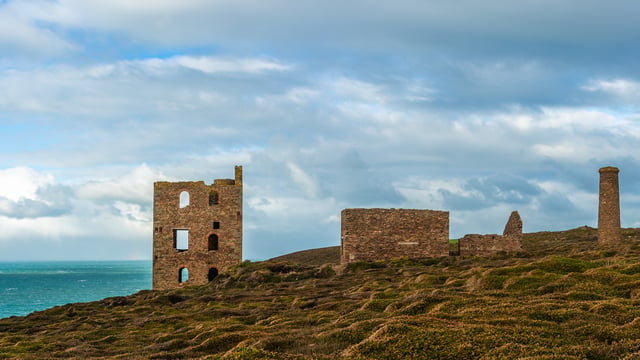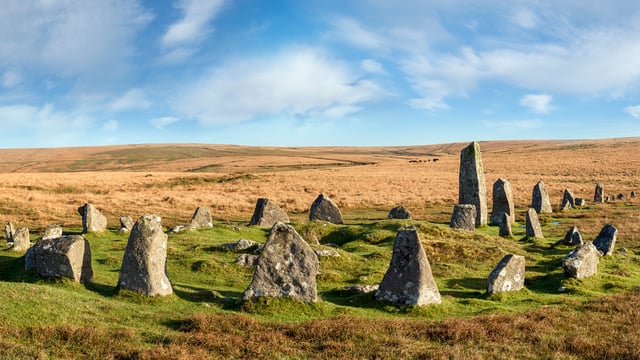England South West Region

Cornwall & Isles of Scilly
Located at Britain’s southwestern tip, Cornwall has a rich collection of prehistoric monuments, from the settlements of Carn Euny and Chysauster to the stone circles at Boscawen-Un and the Hurlers. Probably the county’s most famous medieval site, Tintagel Castle, is the legendary birthplace of King Arthur, with the Arthurian connection contributing to popular perceptions of Cornwall as a land of mystery and enchantment.

Devon
Part of Britain’s southwestern peninsula, Devon is the largest county in southern England. Largely rural, it is home to Dartmoor as well as much of Exmoor, both national parks in which various prehistoric structures can be found, among them the Fernworthy and Grey Wethers stone circles. Perhaps Devon’s best-surviving medieval castle is at Berry Pomeroy, while the county also possesses a wealth of medieval churches, including the largely 15th-century Exeter Cathedral. In addition, Devon is known for its large number of stately homes, many of which are open to the public.

Dorset

Gloucestershire
Gloucestershire has one of the finest concentrations of Early Neolithic monuments in Britain. Iron Age hillforts are also to be found, while in the Roman era, the area saw the growth of two major new towns, Corinium (Cirencester) and Glevum (Gloucester). After the collapse of the Roman administration, indigenous groups reasserted their dominance, although Anglo-Saxon groups subsequently came to power in the early middle ages. Like much of England, Gloucestershire has its share of medieval castles and churches, as well as early modern country houses. In the 19th century the iron ore under the Forest of Dean led to an expansion of industry and the railways.

Somerset & Bristol
From the heights of Exmoor and the Mendips to the watery lowlands of the Levels, Somerset has a rich prehistoric heritage, from the Early Neolithic long barrow at Stoney Littleton to the Bronze Age stone circles at Stanton Drew, and on to various Iron Age hillforts – including Cadbury Camp, often associated with King Arthur’s legendary Camelot. The Romans also settled here, with the city of Bath being home to one of England’s most famous Romano-British sites, the baths and springs of Sulis-Minerva. As well as having a medieval fortification at Nunney Castle, the county also bears evidence of medieval ecclesiastical activity, such as the ruins of Muchelney Abbey, Glastonbury Abbey, and the surviving tower atop Glastonbury Tor.



